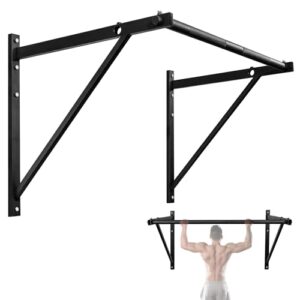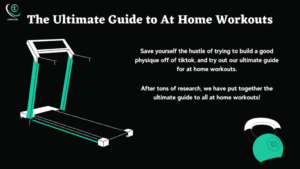Cardio and strength workouts combine aerobic exercises with muscle-strengthening activities. This dynamic duo enhances overall fitness and health.
Combining cardio and strength training in a workout routine offers a holistic approach to fitness. This method boosts endurance, builds muscle, and accelerates fat loss, catering to those aiming for both a strong and lean physique. Engaging in such workouts can optimize heart health, increase metabolism, and improve bone density.
By alternating between heart-pumping exercises like running or cycling and resistance training with weights or bodyweight moves, you challenge your body in diverse ways. This versatility not only keeps training sessions fresh and exciting but also encourages balanced development and reduces the risk of injury. A well-planned cardio and strength regimen is key to achieving comprehensive fitness goals and maintaining a healthy lifestyle.
:max_bytes(150000):strip_icc()/how-to-gain-muscle-promo-2000-3c3229f8de854d979d434cd2982db4fe.jpg)
Credit: www.shape.com
Balancing Cardio And Strength Training
Finding the perfect blend between cardio and strength training isn’t a walk in the park. Many fitness enthusiasts struggle with arranging their workout routine for the best results. The right balance can skyrocket your fitness levels and deliver the desired results effectively.
The Symbiotic Relationship
Cardio and strength training feed off each other. Cardio improves your endurance, making strength sessions more impactful. Conversely, strength training builds muscle that can boost cardio performance. This mutual benefit is key for achieving a toned physique and a healthy heart. Here’s how they work in tandem:
- Cardio burns calories and increases lung capacity.
- Strength training builds muscle and metabolic rate.
- Together, they reduce fat and enhance strength.
Managing Workout Schedules
Creating a workout calendar is essential. To manage your schedule effectively, follow these steps:
- Decide on workout days: Aim for 3-5 days weekly.
- Alternate between cardio and strength: This prevents overtraining and ensures recovery.
- Short on time? Combine both in a circuit training session.
- Track progress: Adjust your routine based on results and how your body feels.
Remember, muscle recovery is vital for growth. Leave at least one day for rest. Vary the intensity of workouts to keep your body guessing. This will also reduce boredom and make your fitness journey enjoyable.
:max_bytes(150000):strip_icc()/stair-climber-AdobeStock_447239362-2000-f8df7c0f7146484ab0d02c543df8672f.jpg)
Credit: www.shape.com
Physiological Benefits Of Combined Training
Combining cardio and strength workouts unlocks impressive health perks. This powerful duo works in harmony to enhance energy levels and speed up recovery. Engaging in both training forms brings forth a cascade of physiological benefits. Let’s dive into the key advantages.
Enhanced Caloric Burn
Combining routines revs up the metabolism. The body keeps burning calories long after the session ends. This effect is known as “afterburn”. It helps shed weight faster and more efficiently.
- More energy spent during exercise
- Higher post-workout calorie burn
- Efficient fat loss while preserving muscle
Improved Heart Health
Cardio and strength workouts are a boon for the heart. They reduce blood pressure and enhance circulation. Regular practice strengthens the heart muscle. It prevents many cardiovascular diseases.
| Benefit | Description |
|---|---|
| Lower Blood Pressure | Exercises reduce strain on the heart |
| Better Circulation | Oxygen-rich blood flows more freely |
| Stronger Heart | The heart muscle works more efficiently |
Boosted Muscle Growth
Strength training promotes muscle hypertrophy. It builds and tones muscles. Cardio boosts oxygen supply aiding in recovery. Together, they lead to stronger, leaner muscle development.
Key takeaways include:
- Strength training increases muscle size
- Oxygen flow from cardio aids recovery
- Leaner body mass is achieved
Designing The Perfect Week
Crafting a balanced routine between cardio and strength workouts is no easy feat. Designing the perfect week means aligning your fitness goals with sensible workout strategies. Whether your aim is to lose weight, build muscle, or improve overall health, the right plan sets the stage for success. A harmonious blend of cardio, strength training, and rest can supercharge your progress. Let’s dive into how to split those sessions and time your rest days for the ultimate workout week.
Splitting Your Sessions
Dividing your weekly routine between strength and cardio is crucial. An ideal plan engages every muscle group and boosts your heart rate, all while avoiding burnout.
| Day | Workout Type |
|---|---|
| Monday | Strength Training – Upper Body |
| Tuesday | Cardio – High Intensity Interval Training (HIIT) |
| Wednesday | Strength Training – Lower Body |
| Thursday | Cardio – Steady State |
| Friday | Strength Training – Full Body |
| Saturday | Active Recovery – Light Cardio or Yoga |
| Sunday | Rest |
With this schedule, you ensure comprehensive training. It maximizes muscle engagement while giving each group time to recover.
Incorporating Rest Days
Rest is as important as the workouts themselves. Rest days let your body recover, repair, and grow stronger.
- Weave in a full rest day, like on Sunday, to rejuvenate.
- Active recovery days keep the blood flowing without overtaxing your system.
- Listen to your body to prevent injuries.
Use lighter activities such as walking or gentle yoga as your rest day options. They aid in recovery, keeping the momentum without any strain.
Effective Workouts For Synergy
Discover the power of combining cardio and strength training. These workouts create synergy. They boost endurance and build muscle at the same time. Your fitness game will reach new heights.
High-intensity Interval Training (hiit)
HIIT alternates between high-intensity bursts and rest. It torched calories. Your metabolism stays high after the workout. This means more fat loss. It’s time-efficient too.
- Sprint for 30 seconds, walk for 30 seconds.
- Jumping jacks for 45 seconds, rest for 15 seconds.
- Mountain climbers for 30 seconds, pause for 30 seconds.
Repeat these cycles. A 15-30 minute session works wonders.
Circuit Training Basics
Circuit training mixes cardio and strength exercises. It hits multiple muscle groups. You move quickly between stations. Little to no rest in between ensures a steady heart rate.
| Exercise | Duration | Rest |
|---|---|---|
| Push-ups | 1 minute | 30 seconds |
| Squats | 1 minute | 30 seconds |
| Jump rope | 1 minute | 30 seconds |
Complete 3-5 rounds. You’ll get stronger. Keep a brisk pace. Boost both strength and cardio fitness.
Optimizing Nutrition And Hydration
Fueling your body for a workout is much like putting gas in a car. Our bodies need the right balance of nutrients and water to perform at their best. Whether you’re lifting weights or running miles, understanding the connection between nutrition, hydration, and your exercise regimen is crucial. Let’s dive into how to master this balance with the right pre- and post-workout meals and staying hydrated throughout your training.
Pre- And Post-workout Meals
The right food before and after exercise kickstarts recovery and improves energy levels. Here’s how to time it right:
- Eat complex carbs: Oats, brown rice, or whole-grain breads provide sustained energy.
- Include lean protein: White meat, tofu, or legumes help muscle repair.
- Healthy fats: Avocado or nuts offer lasting fuel for longer workouts.
Aim for a meal 2-3 hours before exercise and a snack 30 minutes after to replenish energy stores.
Staying Hydrated Throughout Training
Hydration keeps your performance at its peak. Follow these simple steps to stay on top of your hydration:
- Drink water 2 hours before exercise.
- Sip on water or a sports drink during your workout.
- Rehydrate post-workout based on sweat loss.
| Hydration Guide | |
|---|---|
| Before: | 16-20 oz of water |
| During: | 4-8 oz every 15-20 mins |
| After: | 24 oz for each pound lost |
Tracking Progress And Adjusting Routines
Tracking Progress and Adjusting Routines is key to ensuring your efforts in combining cardio and strength workouts pay off. It’s essential to have tangible markers of success. This not only fuels motivation but also informs when it’s time to step up your game. Let’s explore the integral steps to keep your fitness journey on the fast track to success.
Measuring Fitness Gains
Identifying improvements in your fitness level can be thrilling. It confirms your hard work is producing results. Focus on different metrics to get a comprehensive view. Consider these methods:
- Track Time and Distance: Note how long it takes to run a set distance. Shorter times usually signal enhanced cardiovascular endurance.
- Monitor Strength Increases: Log the weights you lift. Gradually increasing weights indicates growing muscle strength.
- Body Measurements: Regularly measure your body. Decreases in waist circumference or changes in body composition reflect physical changes.
- Fitness Tests: Perform periodic fitness tests to evaluate improvements. This could be the number of push-ups or sit-ups you can do in a minute.
When To Intensify Your Workouts
Hitting a plateau might mean it’s time to intensify your workouts. Look for these signs:
- Ease of Completion: If your workout feels more comfortable than challenging, add intensity or complexity.
- Steady Progress: Once gains from your current routine slow down, it’s time to push harder.
- Consistent Energy: Feeling less fatigued after your usual workout suggests your fitness level has improved.
- Recovery Rate: Quicker recovery after exercising means your body can handle more strenuous activities.
Adjust your routine accordingly. Gradually increase weights, incorporate high-intensity intervals, or add new exercises. Constantly challenge your body to achieve better results.
Common Pitfalls And How To Avoid Them
Common Pitfalls and How to Avoid Them in cardio and strength training often lead to setbacks. Recognize these traps early. Implement strategies to steer clear and optimize your workout routine.
Avoiding Overtraining
Knowing your limits is crucial. Balance intensity with recovery periods. Overtraining can lead to burnout and injury. Look out for signs like excessive fatigue, mood swings, and a decline in performance. Prevent overtraining by:
- Scheduling rest days
- Getting ample sleep
- Listening to your body
- Mixing up workouts
Maintain a balanced workout routine. Employ cross-training to rest specific muscle groups. Prioritize sleep and nutrition for recovery.
Navigating Training Plateaus
Plateaus occur when progress seems to halt. Your body adapts to consistent routines, making gains harder to achieve. Push past plateaus by:
- Changing exercise variables
- Increasing resistance or intensity
- Switching up your workout regimen
Switching up your routine sparks new challenges for your muscles. Gradually boost intensity to see continued improvements. Avoid frustration by setting manageable goals and celebrating small victories.

Credit: www.puregym.com
Frequently Asked Questions On Cardio And Strength Workout
Can Cardio And Strength Training Be Combined?
Absolutely. Combining cardio and strength training is effective for achieving a balanced workout routine. It can improve endurance, build muscle, and increase overall fitness.
How Often Should I Do Cardio And Strength Workouts?
For best results, aim for at least 3-5 days a week, with workouts that combine both cardio and strength exercises. Balance is key to allow ample recovery.
What Are The Benefits Of Mixing Cardio With Strength?
Mixing cardio with strength training enhances calorie burn, boosts metabolism, and builds lean muscle. It also promotes heart health and improves muscular endurance.
Should Cardio Be Done Before Or After Strength?
It’s generally recommended to do strength training before cardio to ensure you have enough energy for high-quality lifts and to prevent fatigue during resistance exercises.
Conclusion
Balancing cardio and strength training unlocks optimum health benefits. It enhances endurance, builds muscle, and boosts metabolism. Embrace this duo for a holistic fitness journey. Start your regimen today—your body will thank you for every heart-pumping, muscle-strengthening moment! Let’s get stronger and healthier, one workout at a time.
















